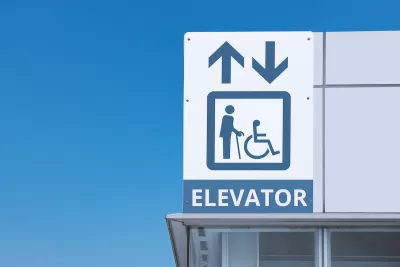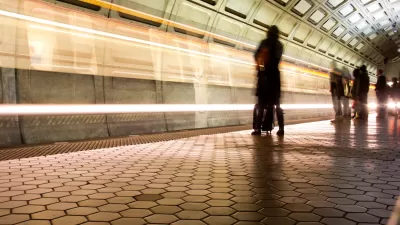Even when accessibility is taken into account, transit stations and pedestrian infrastructure often still fail to make appropriate accommodations.

Despite federal and state laws dictating that public spaces must be accessible to people with disabilities and mobility challenges, many cities in the United States and Canada remain largely inaccessible, writes Ron Buliung in a piece for The Conversation.
According to Buliung, “Access to safe and reliable public transit is one such problem. For example, many of the issues plaguing paratransit (ideally on-demand, door-to-door service for disabled persons) today — unacceptably long wait times, having to plan and schedule days in advance, service costs, convoluted trip regulations, failing to pick people up — are often as old as the services themselves.”
Public transit stations, meanwhile, often lack functional elevators and other amenities. When they do have them, they often face what Buliung calls the ‘last millimetre problem:’ “a wide gap or vertical misalignment between platforms and transit vehicles making it impossible or hazardous for some disabled persons, like my daughter, to get on or off the system.”
Bike infrastructure, too, can exclude the needs of people with disabilities by failing to provide signals for blind pedestrians, for example.
For Buliung, part of the solution is for cities to more carefully listen to the needs of people with disabilities and include them in decision-making in transportation and infrastructure projects from the beginning. “Real accountability, rather than performative empty consultation, should be the order of the day.”
FULL STORY: Despite legislative progress, accessible cities remain elusive

Alabama: Trump Terminates Settlements for Black Communities Harmed By Raw Sewage
Trump deemed the landmark civil rights agreement “illegal DEI and environmental justice policy.”

Planetizen Federal Action Tracker
A weekly monitor of how Trump’s orders and actions are impacting planners and planning in America.

The 120 Year Old Tiny Home Villages That Sheltered San Francisco’s Earthquake Refugees
More than a century ago, San Francisco mobilized to house thousands of residents displaced by the 1906 earthquake. Could their strategy offer a model for the present?

In Both Crashes and Crime, Public Transportation is Far Safer than Driving
Contrary to popular assumptions, public transportation has far lower crash and crime rates than automobile travel. For safer communities, improve and encourage transit travel.

Report: Zoning Reforms Should Complement Nashville’s Ambitious Transit Plan
Without reform, restrictive zoning codes will limit the impact of the city’s planned transit expansion and could exclude some of the residents who depend on transit the most.

Judge Orders Release of Frozen IRA, IIJA Funding
The decision is a victory for environmental groups who charged that freezing funds for critical infrastructure and disaster response programs caused “real and irreparable harm” to communities.
Urban Design for Planners 1: Software Tools
This six-course series explores essential urban design concepts using open source software and equips planners with the tools they need to participate fully in the urban design process.
Planning for Universal Design
Learn the tools for implementing Universal Design in planning regulations.
Clanton & Associates, Inc.
Jessamine County Fiscal Court
Institute for Housing and Urban Development Studies (IHS)
City of Grandview
Harvard GSD Executive Education
Toledo-Lucas County Plan Commissions
Salt Lake City
NYU Wagner Graduate School of Public Service





























